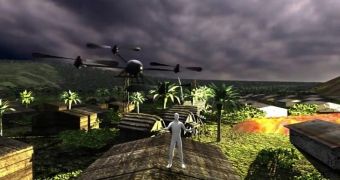The field of robotic drones is one of the favorite playgrounds of the 3D printing community, but automated machines, especially flying ones, also possess a degree of usefulness that isn't easy to match, especially when it comes to military scouting and search and rescue operations.
Considering this, it is not so shocking to learn of what British multinational defense, security, and aerospace company BAE Systems is thinking about. Specifically, the company intends to give airplanes the ability to print their own UAVs on the fly.
Aircraft are built to specifications, with certain roles in mind, but it is possible to jury-rig, say, a carrier into a search and rescue plane if the need arises. On-board equipment and supplies play a big part in determining the role and usefulness of such craft.
Having the ability to print drones based on need would allow airplanes a broader range of functions and increase the mission success rate as well.
In a hypothetical situation, an airplane would have to scout a certain area, but simply dropping soldiers or relief crews would be ill-advised for whatever reason.
The airplane could print a UAV (unmanned aerial vehicle) to do a preliminary surveillance flight while the main aircraft circles the designated area.
Upon its return, the data from the UAV would be used to determine what operation should be enacted (armed assistance, rescue, pickup, supply drops, etc).
The returning self-propelled drone could even feed data to the on-board 3D printer, allowing it to print even more, specialized, supporting UAVs that could help their situation: drones that can store water to fight fires, airlifting drones to retrieve trapped human beings, etc.
BAE is also thinking of a larger aircraft that would, in fact, be composed of several, smaller UAVs that can join together and fly as one. It calls its idea “The Transformer” and says that the drones would be able to split apart, with each UAV carrying out a different, previously-appointed task in different areas.
The 3D printing technology envisioned by BAE will not come in the box-like form that one might be used to seeing in this field. Instead, complex robotic contraptions would put the UAVs together through FMD (fused deposition modeling, using a plastic extruder) and selective laser sintering (SLS, for melting and welding metal powders into objects).
Then again, the ETA (estimated time of arrival) is the year 2040, so other 3D printing technologies, as well as surveillance methods, will be created by that point in time. A long time from now, to be sure, especially when considering the fact that 3D printers will go into space later this year, but we suppose something had to remind the world that patience is a virtue.

 14 DAY TRIAL //
14 DAY TRIAL // 
